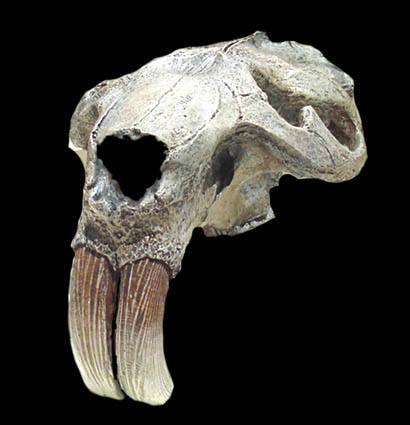Product Description
With rare BLACK OVER GOLD enamel, and the FINEST preservation, this UPPER fossil tusk incisor is of the prehistoric GIANT BEAVER, Castoroides. It is a SUPREME specimen, rarely seen in this preservation, and color!
A premium quality Castoroides fossil tusk is coveted by all that collect Pleistocene North American Ice Age fossils. The main incisors are the most requested fossil of this fascinating extinct giant animal. FINE QUALITY Giant Beaver fossils are very difficult to find on the market.
Every detail is perfectly preserved with an extraordinary, naturally lustrous enamel! The classic chewing wear facet is evident from rubbing against the opposing tusk and is perfectly preserved.
HISTORY
Castoroides, or giant beaver, is an extinct genus of enormous, bear-sized beavers that lived in North America during the Pleistocene. Two species are currently recognized, C. dilophidus in the Southeastern US and C. ohioensis in the rest of its range. C. leiseyorum was previously described from the Irvingtonian of Florida, but is now regarded as an invalid name. All species previously described as C. leiseyorum are considered to belong to C. dilophidus.
Prehistoric giant beavers were much larger than modern beavers. Their average length was approximately 1.9 m (6.2 ft), and they could grow as large as 2.2 m (7.2 ft). The weight of the giant beaver could vary from 90 kg (198 lb) to 125 kg (276 lb). This makes it the largest known rodent in North America during the Pleistocene and the largest known beaver to have ever lived.
One of the defining characteristics of the giant beaver was their incisors, which differ in size and shape from those of modern beavers. Modern beavers have incisor teeth with smooth enamel, while the teeth of the giant beaver were much larger up to 15 cm (6 in) long, with a striated, textured enamel surface.


IMAGES PROTECTED BY COPYRIGHT
 US DOLLAR
US DOLLAR
 EURO
EURO
 AUSTRALIAN DOLLAR
AUSTRALIAN DOLLAR
 CANADIAN DOLLAR
CANADIAN DOLLAR
 POUND STERLING
POUND STERLING
















